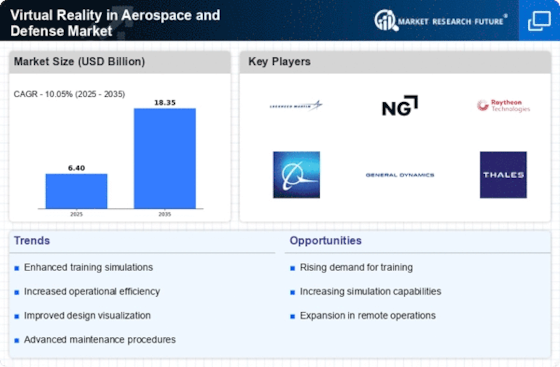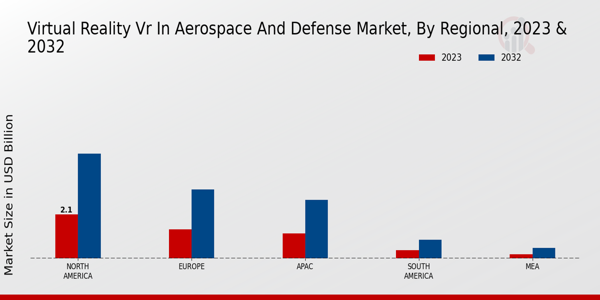Cost Efficiency in Operations
Cost efficiency remains a pivotal driver in the Virtual Reality in Aerospace and Defense Market. By utilizing VR technology, organizations can reduce expenses associated with physical training, equipment, and travel. The ability to conduct training and simulations virtually minimizes the need for extensive resources, which can be particularly beneficial for defense budgets that are often constrained. Furthermore, VR solutions can lead to faster training cycles, allowing personnel to become operationally ready more quickly. As organizations seek to optimize their expenditures, the adoption of VR technology is likely to increase, with market analysts projecting a potential reduction in training costs by up to 50 percent.
Enhanced Situational Awareness
Enhanced situational awareness is a critical driver in the Virtual Reality in Aerospace and Defense Market. VR technology provides users with immersive environments that simulate real-time operational scenarios, allowing for better decision-making and strategic planning. This capability is particularly valuable in defense operations, where understanding the battlefield dynamics can be the difference between success and failure. The integration of VR with data analytics and real-time information feeds can further augment situational awareness, providing personnel with comprehensive insights. As military operations become increasingly complex, the demand for VR solutions that enhance situational awareness is expected to grow, potentially leading to a market expansion of over 25 percent in the next few years.
Enhanced Training Capabilities
The Virtual Reality in Aerospace and Defense Market is experiencing a surge in demand for enhanced training capabilities. This technology allows for immersive simulations that replicate real-world scenarios, enabling personnel to practice and refine their skills in a safe environment. The ability to conduct realistic training exercises without the logistical challenges of traditional methods is appealing to military and aerospace organizations. Reports indicate that the market for VR training solutions is projected to grow significantly, with estimates suggesting a compound annual growth rate of over 30 percent in the coming years. This growth is driven by the need for effective training solutions that can adapt to various operational requirements, thereby enhancing overall mission readiness.
Integration with Artificial Intelligence
The integration of artificial intelligence with virtual reality is emerging as a transformative driver in the Virtual Reality in Aerospace and Defense Market. AI algorithms can analyze vast amounts of data and provide personalized training experiences, adapting scenarios based on individual performance. This synergy not only enhances the effectiveness of training programs but also allows for predictive analytics that can inform strategic decisions. As organizations seek to leverage advanced technologies, the combination of VR and AI is likely to create new opportunities for innovation. Market forecasts suggest that this integration could lead to a substantial increase in the adoption of VR solutions, with potential growth rates exceeding 40 percent in the coming years.
Improved Design and Prototyping Processes
The Virtual Reality in Aerospace and Defense Market is witnessing advancements in design and prototyping processes. VR technology facilitates the visualization of complex systems and components, allowing engineers and designers to interact with 3D models in real-time. This capability not only accelerates the design phase but also enhances collaboration among teams, leading to more innovative solutions. The integration of VR in design processes is expected to reduce development time significantly, with some estimates suggesting a decrease of up to 30 percent in time-to-market for new aerospace products. As the industry continues to evolve, the demand for efficient design methodologies will likely drive further investment in VR technologies.





















Leave a Comment